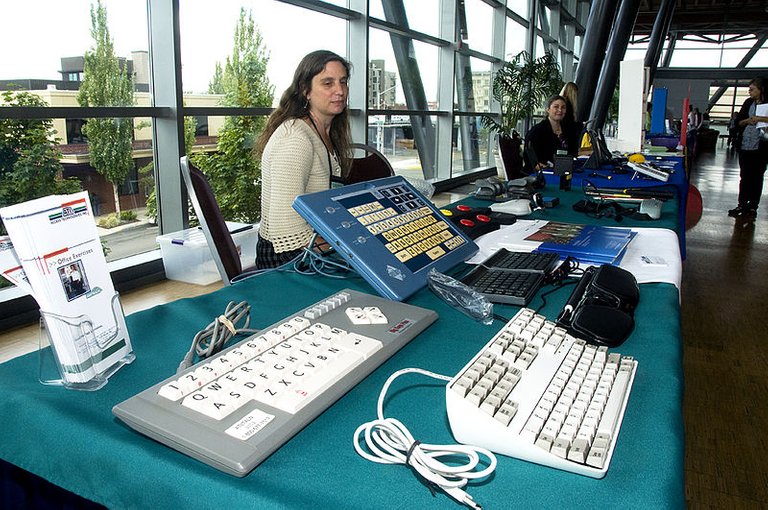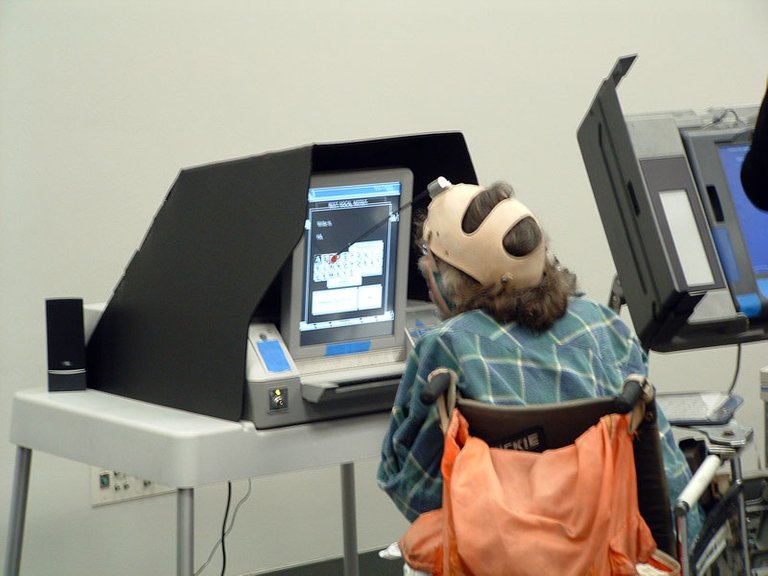Learning through Assistive Technology
Technology is advancing so well and moving at a non-seen speed. Several innovative technologies are making a significant difference in our lives even when it comes to learning. We know that technology is everywhere these days and unlike many centuries ago, technology now lives with us and in some cases, spearheads our activities. But, have you thought of a special kind of technology that can assist individuals who learn, think, and act differently from others?
Thousands of individuals, especially kids, in different parts of the globe have developed certain disabilities towards learning which could have been a result of head injuries, incurable diseases, and aging. However, finding the right resources and implementing proper technologies can improve the overall quality of life, and of course, learning in this case. For people with special learning needs, assistive technology helps break learning barriers to help them learn more and learn better.

What Is Assistive Technology?
Assistive technology is a jaw-dropping aspect of technology with specially designed assistive, rehabilitative, and adaptive devices for individuals with disabilities who often have difficulty carrying out basic activities of daily living on their own. We can say assistive technology is any device, software, or equipment that makes it possible for people to work around their challenges.
Assistive technologies are all around us. For years, assistive technology has been trusted to improve, maintain, and increase productivity and efficiency of work, learning, and the lives of those who can't function independently. Assistive technologies and devices are being used also to help prevent impairment and other health problems. Numerous industrial sectors such as medicine and education are racing to employ assistive technology in their modes of operations to use these tools to enhance the lives of those who need them. For instance, wheelchairs are examples of assistive tools commonly used in hospitals and health care homes for the aged, to help them move around independently.
ASSISTIVE TECHNOLOGY IN LEARNING
Technology has developed immensely to a point where it can help students with specific learning disabilities function well in classes and learn more effectively. There are several assistive technology tools used by tutors to enhance learning. Numerous students are being enrolled in special education programs annually and they can only stand in the face of special education with the help of assistive technology. It is an important development in modern special education and it is set to revolutionize the world of special learning.
Assistive technology in the world of special learning has brought about a drastic change in how students with special learning needs learn and achieve their desired academic levels. The majority of students with special learning needs do not have cognitive impairments. Using assistive technology, many students in this particular category can learn effectively and perform well in class just like students without learning disabilities. All that is needed is the required adjustment to some aspects of their environment to fit for different physical disabilities.
Tutors have also been able to make basic accommodations for those students with cognitive disabilities in a bid to help maximize their learning in the inclusive classroom. Simple adjustments in the depth of information and how that information is cited can incredibly benefit a student who finds it difficult to cope with traditional teaching and assessment techniques.
EXAMPLES OF ASSISTIVE TECHNOLOGY IN LEARNING
Everyone has a different learning pattern and the concept of assistive technology is poised to help struggling learners capitalize on their strengths and minimize their weaknesses. Among a slew of examples of assistive technologies used in learning, below are some of the most renowned.
Phonetic Spelling Software
Reading and writing can be a tall order for many children with learning disabilities. The use of phonetic spelling software helps to automatically convert what the student is typing into the word they intend to type. Audiobooks to help students follow along in their text and counter difficulty in reading are also available and are being used by educators to make learning easy for struggling students.
Electronic Worksheets
Many students with learning disabilities who often find it difficult to read because of their inability to identify speech sounds and decode letters can use electronic worksheets to complete their assignments. An electronic worksheet is an assistive tool that helps students to line up words, numbers, and equations properly, on their assignments. Some worksheets even have extra features like text-to-speech (TTS) or speech synthesizing technology to help curb reading disabilities in students.
Speaking Calculators
Some struggling learners cannot learn number-related concepts or perform accurate calculations and other basic math skills. These kinds of students can benefit massively from a talking calculator. The device helps them easily read numbers and perform accurate calculations.
Variable Speed Recorders
While some students can learn at a fast pace, others might need some more time to assimilate lectures. Most students with learning disabilities struggle with understanding auditing lectures. A variable speed recorder is an ideal solution for these students. Students can record the class and listen to the recording slowly and repeatedly, afterward. They access their lectures in the pitch and tempo that best fits them.

BENEFITS OF ASSISTIVE TECHNOLOGY IN LEARNING
Assistive technology is benefiting a growing number of students across the globe by helping to increase the engagement and inclusion of students with learning disabilities in the general education setting. For struggling learners, assistive technology has created an avenue for them to grow to be independent just their peers without learning disabilities.
Before assistive technology became a thing, students with learning disabilities were trapped in the support they could get that kept them isolated from their peers and excluded from regular academic activities. They lacked collaborations and interactions from their peers and a special educator was assigned to them. However, the inception of assistive technology has given a massive boost to learning communities. Some benefits of assistive technology in learning include increased independence, personalized learning, reduced anxiety, confidence, engagement with peers, and improved academic skills.
Students battle learning disabilities in a variety of different ways. While some are mild, others are debilitating. They have affected student's abilities to learn for years before the use of technology came to be. Now, assistive technology devices and tools have made a lot of affected students build confidence, learn independently, train their competence and discover the infinite potentials they possess.
References
https://elearningindustry.com/use-of-technology-in-special-education
https://www.nichd.nih.gov/health/topics/rehabtech/conditioninfo/help
https://edtechmagazine.com/k12/article/2013/03/how-technology-helping-special-needs-students-excel
Thanks for your contribution to the STEMsocial community. Feel free to join us on discord to get to know the rest of us!
Please consider supporting our funding proposal, approving our witness (@stem.witness) or delegating to the @stemsocial account (for some ROI).
Please consider using the STEMsocial app app and including @stemsocial as a beneficiary to get a stronger support.